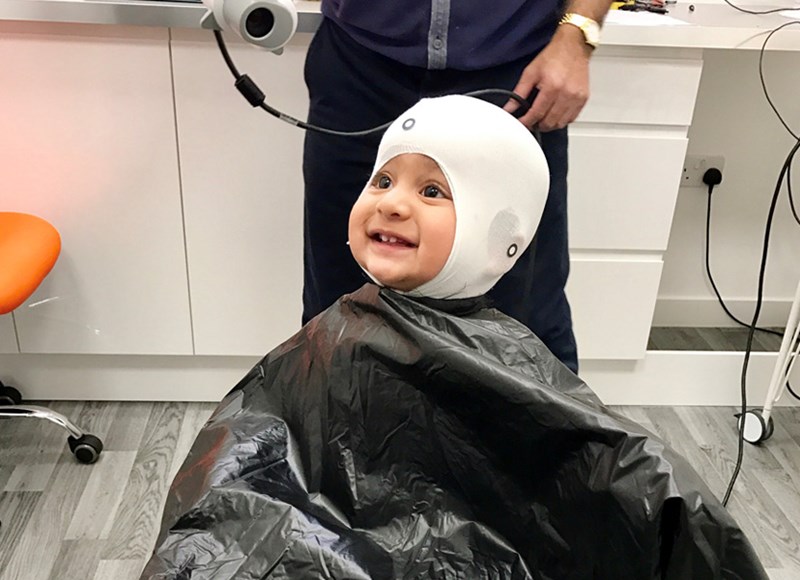
12 March 2018
For many parents the prospect of plagiocephaly treatment for their child is daunting. However, anxious parents can rest assured that both assessment and treatment are completely painless processes.
Recently, plagiocephaly orthotist Saeed Hamid treated baby Amrit who came to our Kingston clinic at the age of five months, with flat spots and 12mm asymmetry. His parents picked out a gorgeous dinosaur pattern and his LOCband helmet was made the following week. His journey lasted four and a half months and he achieved a reduced asymmetry of 3mm.
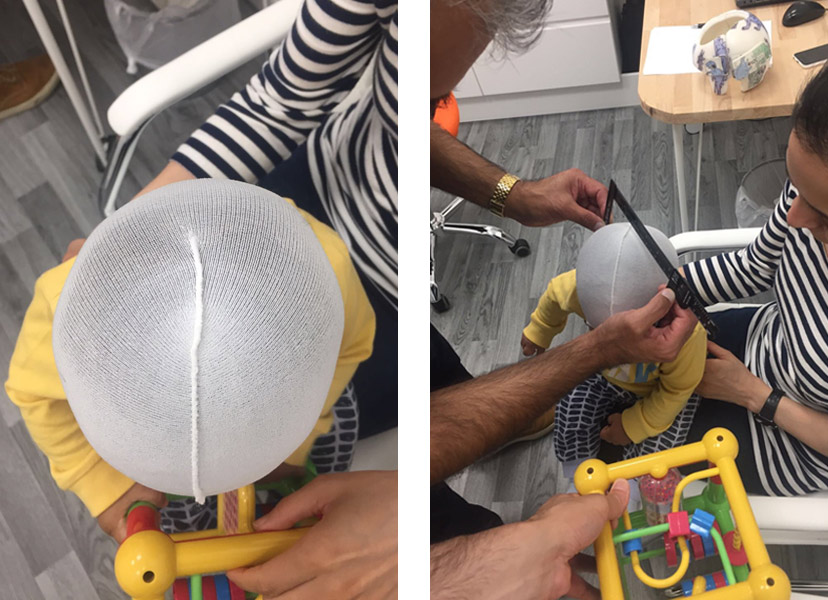
Above: Amrit has his head measured and scanned by clinician Saeed
The optimum age for treatment is between four and seven months – and Amrit first visited us at 5.5 months – an ideal time. It was fantastic to hear that Amrit’s parents were happy, Mother Jaspreet sent us a thank you and some lovely photos of Amrit during his appointments:
“Thank you again for taking care of Amrit's flat head. We are very pleased with the results. Attached are some pics of our visits to the clinic which we thought you may want to keep and use to show others the painless process for the baby.”
We like to make sure we take the time to reassure parents and make them feel welcome when they are visiting any of our clinics. At LOC, you can always contact your clinician if you are worried about something to do with your baby’s treatment and you don’t want to wait for your next review appointment.
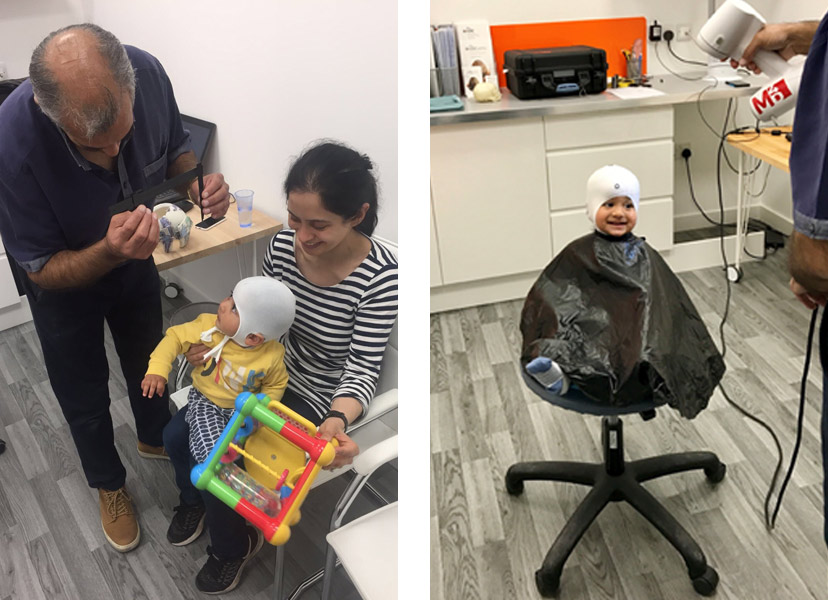
The London Orthotic Consultancy itself has been treating babies with flat head syndrome since 2005 – now having more than 13 years’ experience in the industry. All babies that have completed their course of treatment with us have achieved a measurable improvement in head shape.
While the NHS only recognise flat head syndrome as a ‘cosmetic’ issue, at LOC we understand the practical problems a deformed head can cause in later life; wearing helmets for sport or safety, not being able to wear glasses with misaligned ears and the potential for bullying in later life and feeling self-conscious.
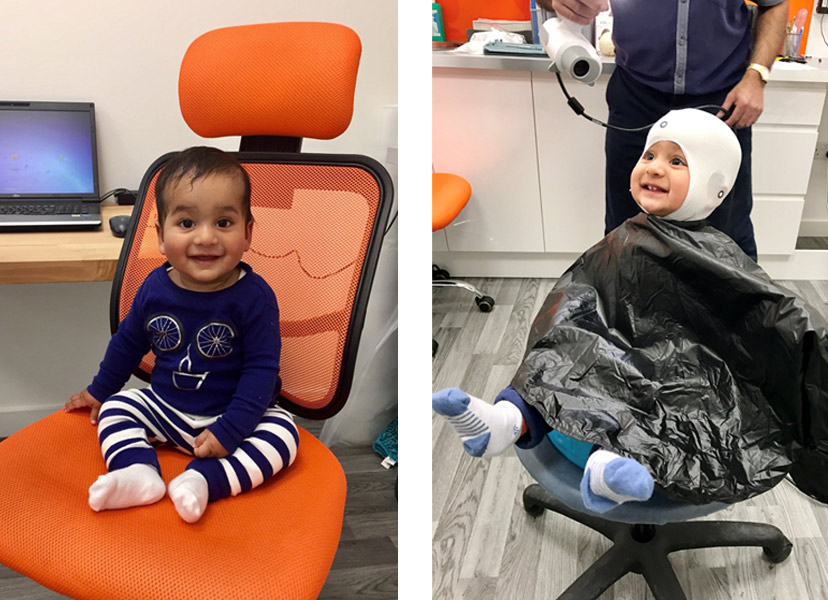
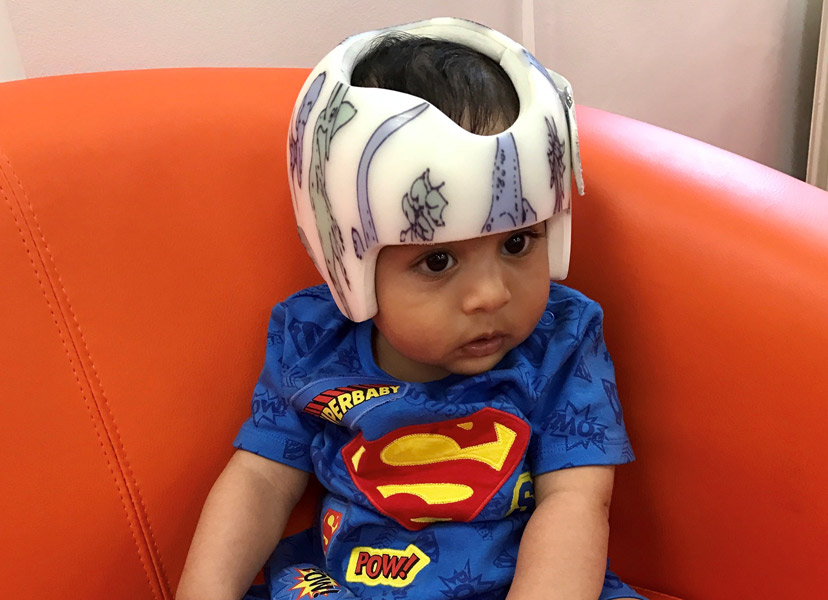
Above: Baby Amrit receives has his bespoke cranial orthosis, or helmet, fitted with dinosaurs
If you are worried about your own baby’s head, it’s certainly worth paying us a visit sooner rather than later. The cut off for treatment is around 18 months, when the fontanelles or ‘soft spots’ on head are no longer malleable and the skull has hardened. As babies grow and develop at different rates, it is always worth checking if you are not sure. There have been cases where a baby’s fontanelles have not fused yet by the age of 18 months, who have achieved successful, but less-marked, results with helmet therapy.
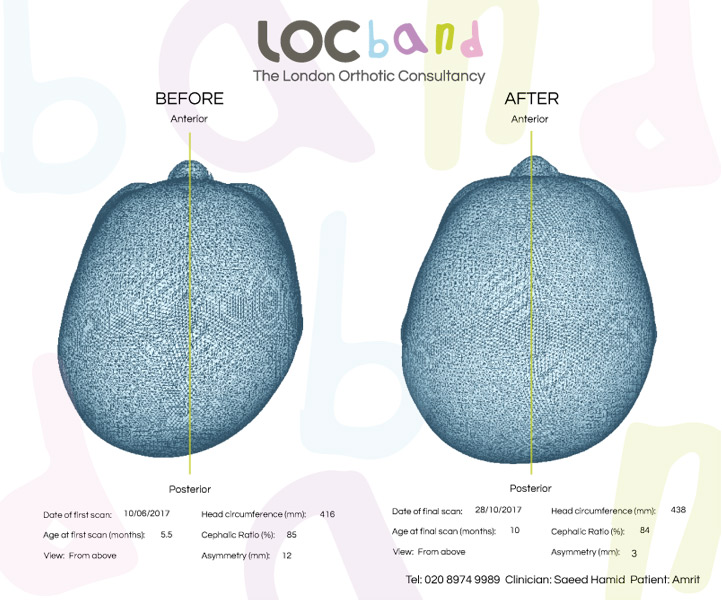
If you don’t live in the area, or abroad, but are concerned about the shape of your baby’s head – we recommend you use our Flat Head Diagnosis Form where you can upload photos of their head from different angles. One of our plagiocephaly clinicians – like Sally or Saeed – will respond within 24 hours and should be able to establish, based on your photographs, whether your baby has positional plagiocephaly.
This is very much dependent on how fast your baby is growing. The faster the growth, the more frequently your baby will be seen so that the helmet can be adjusted. In general, reviews will happen at two to four-week intervals.
The price of treatment covers:
Yes - All babies that have completed their course of treatment with us have achieved a measurable improvement in head shape. However, you don’t have to take our word for it.
Recent independent research conducted by a University Hospital in Germany has endorsed the treatment for babies with moderate or severe plagiocephaly.
A larger, retrospective study has just been published that found complete correction was achieved in 94.4% of babies treated with helmet therapy.
The results were conclusive: repositioning achieved acceptable correction in 77.1% of cases, but 15.8% were moved onto helmet therapy because re-positioning was not working. Meanwhile, 94.4% of the infants who started in the helmet-treated group achieved full correction, as did 96.1% of those who were transferred from the repositioning group into the helmet-treated group.
Further information can be found on our Plagiocephaly Research page.
If your baby has a temperature or a fever due to illness you must remove the band. The band can be put back on once the temperature has returned to normal.
The optimum age for treatment is between four and seven months.
This is because the skull is most malleable at this age and improvements to head shape tend to take less time and are more dramatic. That is not to say that helmet therapy should be ruled out if the baby is older than seven months. Routinely, babies up to the age of 16 months can be treated very successfully.
The cut off age is around 18 months when the fontanelles (soft spots on the head) are no longer malleable. As babies grow and develop at different rates, it is always worth checking if you are not sure. There have been cases where a baby’s fontanelles have not fused yet by the age of 18 months, who have achieved successful, but less-marked results with cranial remoulding therapy.
Torticollis is a condition in which a tight or shortened muscle in one side of the neck causes the head to tilt or turn to one side, resulting in the infant resting its head in the same position. In 2013, we analysed the data from all first appointments in our Kingston clinic and found that 20% of the babies examined had some kind of neck condition that was causing head immobility.
The clinics and clinicians that provide this treatment in the UK will have received similar training and experience. However, we are the only clinic that manufactures its own helmet and our clinicians are closely involved with the process for each individual helmet that we produce.
In addition, we do not restrict review appointments to a set number, we are extremely flexible and respond to individual parents' needs so that the best outcome can be achieved for each baby.
The LOCband is non-invasive and works by applying gentle, constant pressure over the areas of the baby’s skull that are most prominent while allowing unrestricted growth over the flattened areas. The band consists of a soft foam layer inside a thermoplastic shell. As the baby grows, the band will be adjusted frequently to gently guide the skull into a more symmetrical shape.